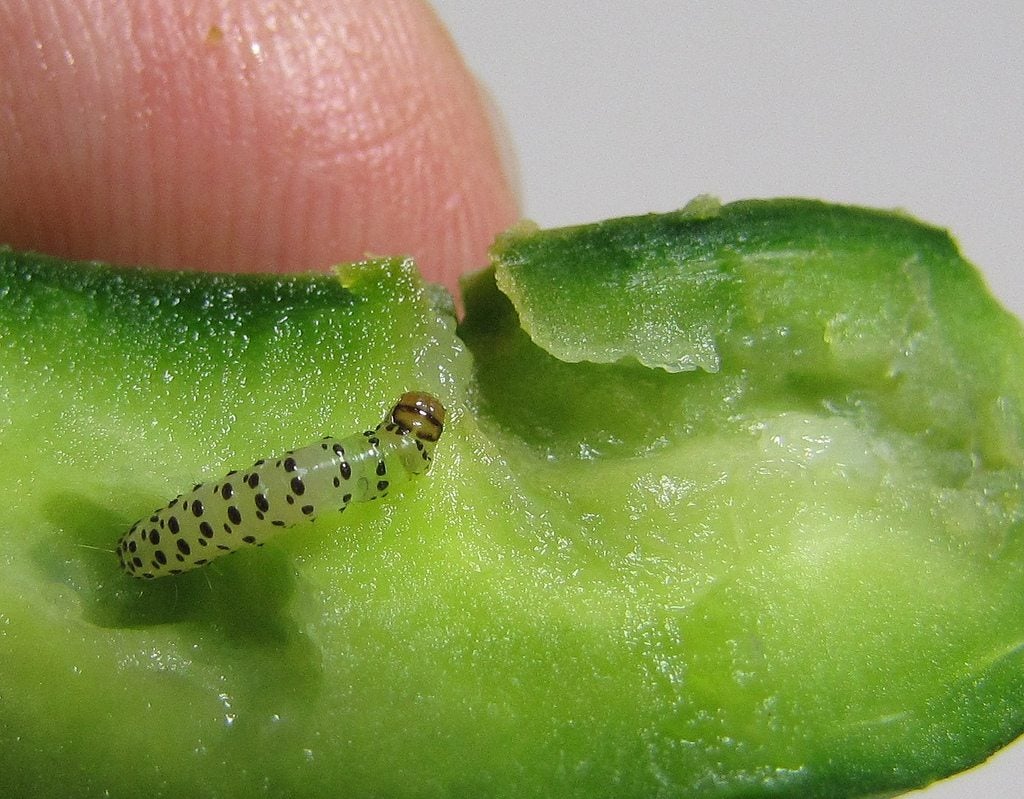What Are Pickleworms: Tips For Treating Pickleworms In Gardens


They may sound like the residents of your favorite fictitious childhood world, but pickleworms are serious business. In this article, we'll walk you through identifying pickleworm damage and tell what you can do about these nasty little caterpillars. Moths appear in a huge variety of shapes and colors, often visiting nighttime barbeques or flitting through the garden after dark. Unlike so many other insects, moths are helpful pollinators that never cause garden damage, right? Unfortunately, some moths are the parents of unruly offspring like the pickleworm. These obnoxious pests are serious trouble when it comes to cucurbit plants.
What are Pickleworms?
Pickleworms are the larval stage of the pickleworm moth (Diaphania nitidalis) and much like the caterpillars of beautiful butterflies, this stage of development can be extremely damaging to gardens. Pickleworms are aggressive eaters, preferring the buds and fruits of cucurbits, especially winter and summer squash, cucumbers, gerkin, and cantaloupe. Early infestations can be difficult to detect, but if you look closely, you may notice perfectly round holes chewed into vine ends, blossoms, or fruit with soft frass coming out through tiny holes. Pickleworm damage can be serious, especially if the worms have already spread through your garden. Those tiny holes they've chewed in your blossoms are likely to prevent fertilization, so fruits will be few and far between. Any fruits that do make it, but are bored into later, are likely to be riddled with bacterial and fungal colonies that invaded after the pickleworm started working its way through.
Pickleworm Control
Treating pickleworms is no easy feat either. Once you've got an active infestation, it's easier to salvage what you can in the garden and prevent future outbreaks. Start by asking yourself, “What do pickleworms eat?" and carefully check each and every cucurbit plant in your garden. Any fruits with holes or frass should be immediately destroyed to prevent the spread of secondary infections. If you catch them early enough in the season, tearing your plants out and starting again may be the easiest course of action. Next season, protect your plants by covering them with floating row covers at night (uncover them during the day so bees can pollinate their flowers). Since pickleworm moths are active after dark, nighttime protection is the best prevention. People who live in areas where pickleworms cause problems year-round may want to spray their cucurbits with Bacillus thuringiensis proactively as the plants grow. Once the caterpillars are inside the plant tissues, it's too late for treatment, so spray early and spray often.
Sign up for the Gardening Know How newsletter today and receive a free copy of our e-book "How to Grow Delicious Tomatoes".

Kristi Waterworth was a regular contributor to Gardening Know How for many years, answering countless queries on plant pests and diseases.